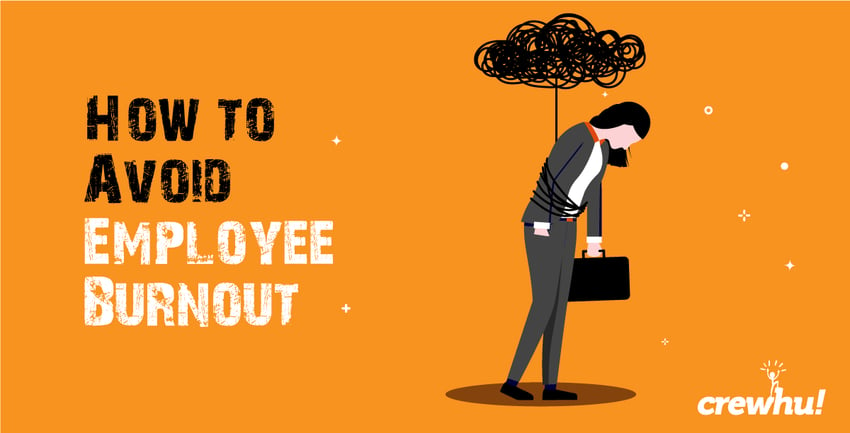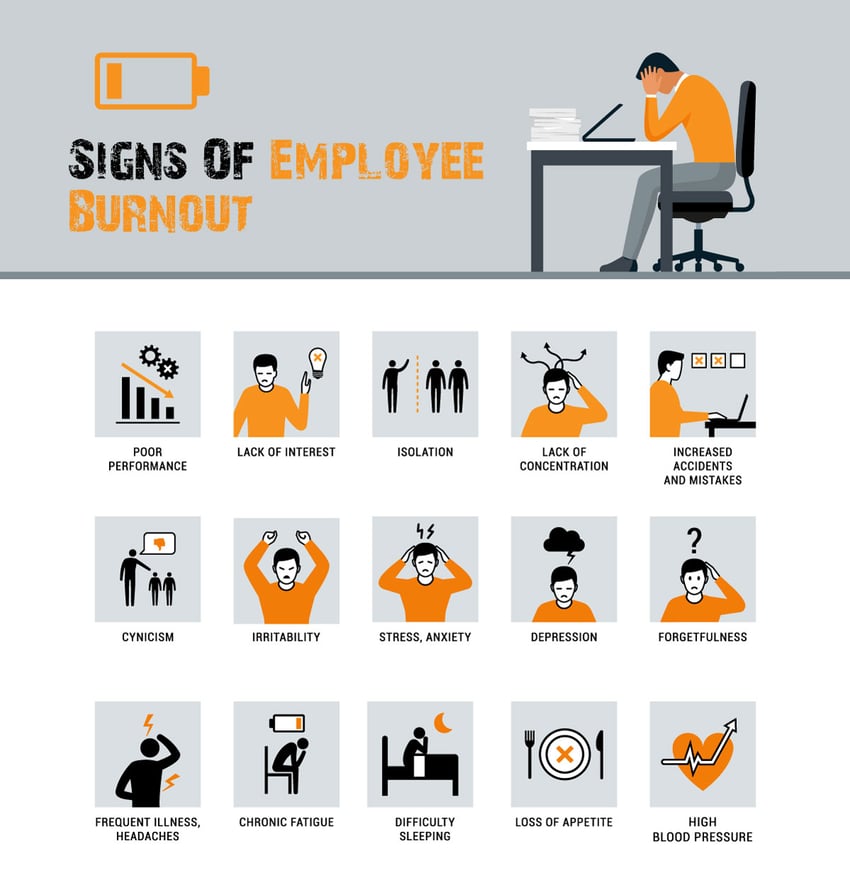How to Identify and Prevent Employee Burnout In Your MSP

As the coronavirus pandemic persists into 2022, employers continue dealing with the fallout on employee health and performance — most notably, burnout.
Key Takeaways:
- The global health crisis ushered in by the novel coronavirus has led to growing concerns about employee burnout across industries and regions
- Sources of burnout could be from the home or the workplace, but the symptoms are the same and can be identified if employers start paying attention
- The prevailing conditions are ripe for burnout, and employers would do well to implement policies that prevent worker burnout even before symptoms start cropping up
Virtually nobody could have envisioned how dramatic the impact of the coronavirus on the world would be. Before governments and health officials could get their acts together, everybody — workers included — was required to go indoors to stay safe.
Two years down the line, employers are still struggling with the challenges of a completely remote or hybrid workforce. There are the obvious workplace challenges about how to effectively sync a workforce during a lockdown, coping with isolation, and also how to provide the technology needed to make hybrid work models work, and so on and so forth. However, a less obvious, yet equally important, difficulty employers and employees are facing is the growing concern about employee burnout.
According to studies by Gallup Research, before the pandemic, 76% of workers were already reporting feeling burned out sometimes, while 28% reported feeling burned out always or very often.
The stressful events of the last two years have most likely made those numbers trend upwards, and as the pandemic and lockdowns persist, you can expect the trend to continue.
Factors pushing the rise of burnout levels since 2020 include the economic downturn, job losses, pay cuts, and the sense of uncertainty about what the future will look like. When you add to that the conflicting reports and rhetoric from governments and health officials, remote-work-related struggles, dwindling work-life balance, and deepening health concerns, it’s not hard to see why your employees are feeling burned out.
This situation is so rife and dire that businesses that pay more attention to and invest in workers’ wellbeing will soon become more attractive than their peers as places to work. You can prevent your MSP from getting left behind by learning to identify the symptoms of burnout in your employees and going the extra mile to prevent it.

Symptoms of burnout in employees
Sources of burnout are not always to be found at the office. They could come from the home as well. As an employer, you can’t split things up and decide to deal with burnout only when it’s caused by the office, because the chances are almost certain that no matter where the source lies, your employee’s work will be impacted.
Here are a few symptoms of burnout to look for in your employees:
- When an employee becomes cynical at work: When you realize that an employee starts behaving completely opposite to the jovial, positive attitude for which you hired them, you may have someone dealing with burnout.
- When an employee starts showing up late or having trouble getting started: When an employee starts dragging their feet where they previously showed enthusiasm, burnout may be on the horizon.
- When an employee becomes irritable or impatient with co-workers, customers, or clients: Burnout leaves people with a very short fuse temperamentally. Employees suffering from burnout may find themselves with very little patience to offer coworkers or even their work itself.
- When an employee suddenly loses all energy to be consistently productive: A sudden lack of energy is one of the first and surest signs of trouble on the horizon where burnout is concerned. If an employee starts struggling to do what they used to do with ease, then they may be suffering from burnout.
- When an employee finds it hard to concentrate: Burnout usually leaves employees with an inability to concentrate on their work. Everything from social media to office gossip holds more appeal than work to such employees.
- When an employee stops deriving satisfaction from their achievements: Employees who suddenly lose a sense of pride and purpose in their work may be struggling with burnout.
- When an employee starts feeling disillusioned about their jobs: When employees start losing joy and enthusiasm about things they used to be excited about, they may be suffering from burnout.
- When an employee starts turning to external aids to feel better: If you notice an employee turning to food, booze, and other external aids to cope with the demands of work and life, they are most likely dealing with burnout.
- When an employee admits to changing sleep habits: An unexplained change in sleeping habits is usually a sign of underlying burnout.
- When an employee starts suffering from unexplained headaches, stomach problems, or other physical ailments: If you notice symptoms like these in an employee, they may be dealing with burnout. Usually, these are sporadic, unexplainable, and often come up when the employee enters the office.
Any and all of these symptoms could be a sign of burnout. You want to pay attention to those on your team who exhibit any of these symptoms and try to dig deeper to see where you can help as an employer.
How to prevent burnout in your employees
It’s usually easier, wiser, and less costly to prevent burnout than to treat it when it shows up in your employees. Here are a few ways in which you can do that:
Have informal interactions at the office
There are many ways you can go about this, but the essential thing is to create an atmosphere and processes whereby employees are free to voice their concerns and opinions without any pressure. Making sure office life is not only about work is the surest way to keep burnout away.
Respect working hours
Commit to creating a work culture that does not encroach on the private hours of your employees. When an employee steps out that office door at the end of each workday, you should be as committed to allowing them to get their rest away from work as they are. Sometimes, this may require you to solicit the help of family members and housemates to ensure your employees aren't looking through their work emails when they should be resting.
Encourage breaks at the workplace
Today, the office can get so busy that people forget to take breaks. That’s a recipe for burnout. You want to make sure that, in between meetings and execution, there are enough rest breaks to keep everyone functioning properly over the long run.
Contact Crewhu
Crewhu is the first employee recognition and customer satisfaction software solution designed specifically for MSPs. An effective employee reward program that utilizes gamification to maintain employee motivation is one of the best ways to prevent burnout. Crewhu provides software solutions that automate the entire process for you, so you can reap rewards faster. Schedule a demo with Crewhu today.







